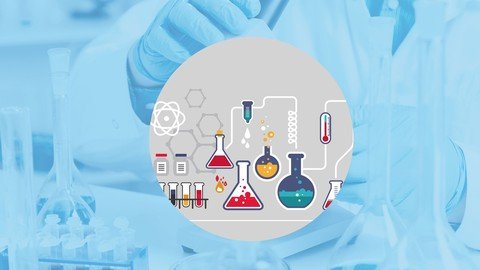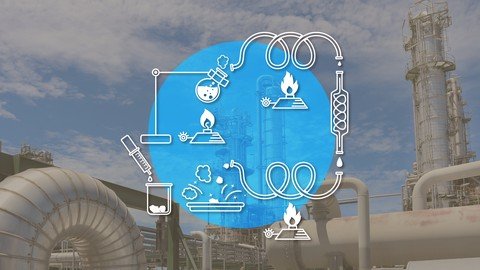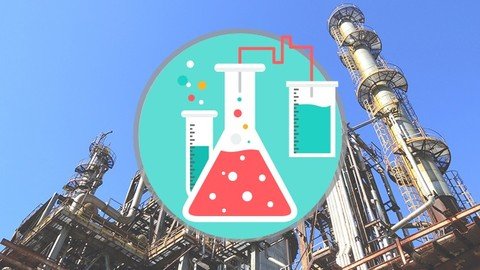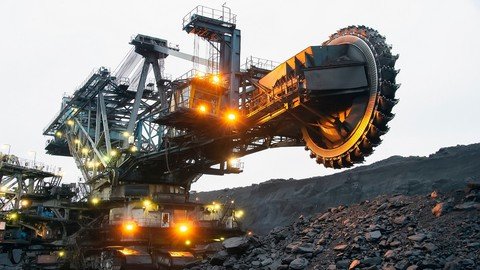Aspen Hysys - Basic Process Modeling
"softddl.org"
20-08-2022, 04:42
-
Share on social networks:
-
Download for free: Aspen Hysys
-

Last updated 8/2019
MP4 | Video: h264, 1280x720 | Audio: AAC, 44.1 KHz
Language: English | Size: 1.68 GB | Duration: 4h 51m
Learn how to model basic Industrial and Chemical Processes!

Last updated 8/2019
MP4 | Video: h264, 1280x720 | Audio: AAC, 44.1 KHz
Language: English | Size: 1.68 GB | Duration: 4h 51m
Learn how to model basic Industrial and Chemical Processes!
What you'll learn
Model basic chemical processes
Simulate basic industrial processes
Understand the concept of Flowsheet and Manipulate it
Set up the required/basic inputs for a Simulation
Choose the most adequate Method for Physical Properties Modeling
Be able to model the most important/used Unit Operations
Modify all reporting results in order to make analysis
Requirements
Chemical Engineering Basics
Elementary Principles of Plant Operation/Design (Recommended)
Aspen HYSYS (Version 7 at least)
Description
The BASIC Aspen HYSYS Course will show you how to model and simulate Processes (From Petrochemical, to Ammonia Synthesis and Polymerisation).
Analysis of Unit Operation will help you in order to optimise the Chemical Plant.
This is helpful for students, teachers, engineers and researchers in the area of R&D and Plant Design/Operation.
The course is didactic, with a lot of applied theory and Workshops/Study cases.
At the end of the course you will be able to setup a simulation, run it, get results and more important, analysis of the process for further optimisation.
Overview
Section 1: Introduction to Process Modeling!
Lecture 1 Welcome to the Course!
Lecture 2 Why Process Modeling/Simulation?
Lecture 3 Join the Aspen Plus & HYSYS Forum (Unofficial)
Section 2: Course Objectives
Lecture 4 Content (Index)
Lecture 5 Course Objectives
Section 3: Introduction to Aspen HYSYS
Lecture 6 About Aspen HYSYS and its Versions
Section 4: User Interface & Getting Help
Lecture 7 Introduction to HYSYS Graphical User Interface
Lecture 8 Starting Page - New, Open, Extensions, Templates Overview
Lecture 9 HYSYS - Landing Page
Lecture 10 Introduction to the Environments
Lecture 11 HYSYS - Environment Overview
Lecture 12 Getting Help
Lecture 13 HYSYS - Getting Help
Section 5: Environment I: Physical Properties
Lecture 14 Introduction to the Physical Property Environment
Lecture 15 Physical Properties Requirements
Lecture 16 The Fluid Package
Lecture 17 HYSYS - Filling up the Physcal Property Environment
Section 6: Environment II: Introduction to Flowsheet
Lecture 18 Introduction to the Simulation environment & Flowsheet
Lecture 19 Interacting with the Simulation Environment
Lecture 20 HYSYS - Filling up the Simulation Environment
Lecture 21 Basic Results and Conclusion
Lecture 22 HYSYS - Basic Results and Tables
Section 7: Basic - Unit Operation Models
Lecture 23 Introduction to the Unit Operation Section
Lecture 24 Introduction to Unit Operations
Lecture 25 HYSYS - Unit Operations
Lecture 26 Mixers & Tees
Lecture 27 Exercise: Mixers & Tees
Lecture 28 Heat Exchange
Lecture 29 Exercise: Heaters and Collers
Lecture 30 Separator (Flash)
Lecture 31 Exercise: Separator (Flash)
Lecture 32 Columns
Lecture 33 Exercise: Distillation Column
Lecture 34 Hydraulics - Pump
Lecture 35 Exercise: Pump
Lecture 36 Hydraulics - Compressor
Lecture 37 Exercise: Compressor
Lecture 38 Reactors
Lecture 39 Exercise: Conversion Reactor
Lecture 40 Unit Operations Closure
Section 8: Basic Reporting of Data and Results
Lecture 41 Introduction to the Results & Reporting Section
Lecture 42 Basic Reporting
Lecture 43 HYSYS - The Workbook
Lecture 44 HYSYS - Exporting Data to Excel
Lecture 45 HYSYS - Creating Reports
Section 9: Worked Case Studies (I, II and III)
Lecture 46 Introduction to the Case Studies
Lecture 47 Case Study I - Statement
Lecture 48 Case Study I: Simulation
Lecture 49 Case Study I: Results and Conclusion
Lecture 50 Case Study II: Statement
Lecture 51 Case Study II: Simulation
Lecture 52 Case Study II: Results and Conclusion
Lecture 53 Case Study III: Statement
Lecture 54 Case Study III: Simulation
Lecture 55 Case Study III: Results and Conclusion
Lecture 56 Case Studies Closure
Section 10: Individual Case Study
Lecture 57 Introduction to the Individual Case Study
Lecture 58 Case Study IV: Overview & Results
Section 11: 10. Course Conclusion
Lecture 59 Course Wrap-up
Lecture 60 Continue with your Aspen Tech Education
Section 12: Bonus & Surprises!
Lecture 61 Bonus!
Lecture 62 More Courses!
Chemical Engineers,Process Engineers,Students related to engineering fields,Teachers willing to learn more about process simulation,Petrochemical Engineers
Homepage
https://www.udemy.com/course/aspen-hysys-basic-process-modeling/
https://rapidgator.net/file/22bebb31ccbdc53afb554083794914f2/hbjdu.Aspen.Hysys..Basic.Process.Modeling.part2.rar.html
https://rapidgator.net/file/b1e4b58d83b23f4501d2a41f3c9acb0a/hbjdu.Aspen.Hysys..Basic.Process.Modeling.part1.rar.html

https://uploadgig.com/file/download/961290e96766d867/hbjdu.Aspen.Hysys..Basic.Process.Modeling.part2.rar
https://uploadgig.com/file/download/b533CedB94016f0D/hbjdu.Aspen.Hysys..Basic.Process.Modeling.part1.rar

https://nitroflare.com/view/0BB25AB5CF4C68B/hbjdu.Aspen.Hysys..Basic.Process.Modeling.part2.rar
https://nitroflare.com/view/D4DA124517B710F/hbjdu.Aspen.Hysys..Basic.Process.Modeling.part1.rar
Links are Interchangeable - No Password - Single Extraction
The minimum comment length is 50 characters. comments are moderated





